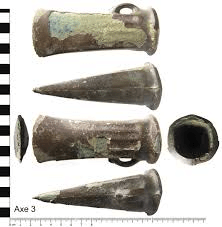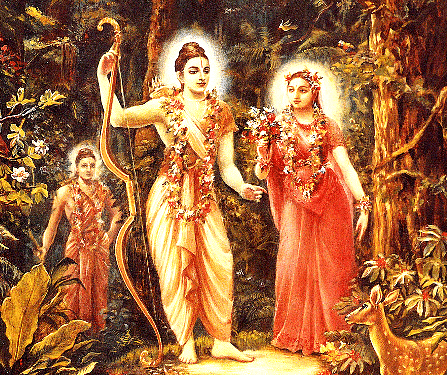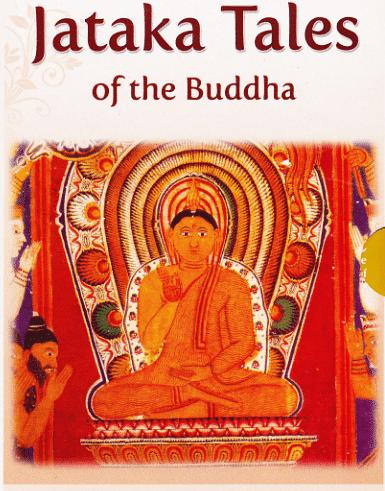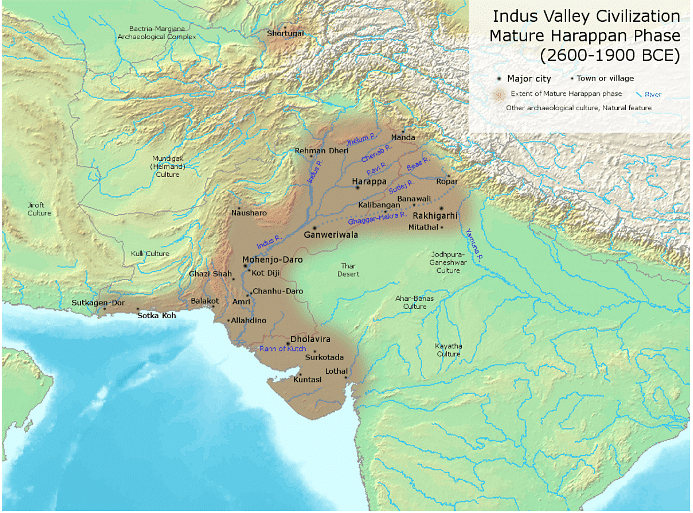- The earliest known evidence of man in our country was in Bori in Maharashtra and dates back to 1.4 million years ago
- Prehistory is the period that has records of human activities, civilization, using of stone tools. This period doesn’t witness any writings from the civilians, therefore, this period is the prehistoric period in Ancient history.
- Prehistory also refers to the hunter-gather lifestyle of people in that era/ period. Pre-history is the fact of origin of human activities and civilization thousands of years ago. In general, prehistory is divided into 3 ages and hence the name was given "A 3 Age System".
- The 3 ages are: Stone Age, Bronze Age, and Iron Age.
These 3 ages give pieces of evidence of human activity in ancient times. These ages are evolutionary ages in humankind.
- The stone age is the prehistoric period, i.e., the period before the development of the script, therefore the main source of information for this period is the archaeological excavations. Robert Bruce Foote is the archaeologist who discovered the first paleolithic tool in India, the Pallavaram handaxe.
- On the basis of geological age, the type and technology of stone tools, and subsistence base, the stone age is classified primarily into three types:
- Paleolithic
- Mesolithic
- Neolithic
- The term ‘Palaeolithic’ is derived from the Greek word ‘paleo' which means old and ‘lithic’ meaning stone. Therefore, the term Palaeolithic age refers to the old stone age.
- The old stone age or paleolithic culture of India developed in the Pleistocene period or the Ice Age, which is a geological period of the age when the earth was covered with ice and weather was so cold that human or plant life could not survive. But in the tropical region, where ice melted, the earliest species of men could exist.
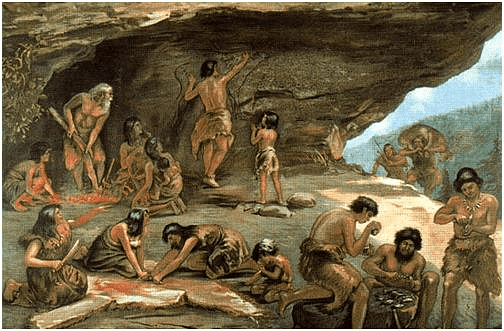 Living in Paleolithic age
Living in Paleolithic age
Main characteristics of the Palaeolithic age:
- The Indian people are believed to have belonged to the ‘Negrito’ race, and lived in the open air, river valleys, caves and rock shelters.
- They were food gatherers, ate wild fruits and vegetables, and lived on hunting.
- There was no knowledge of houses, pottery, agriculture. It was only in later stages they discovered fire.
- In the upper paleolithic age, there is evidence of art in the form of paintings.
- Humans used unpolished, rough stones like hand axes, choppers, blades, burins and scrapers.
The old stone age or paleolithic age in India is divided into three phases according to the nature of the stone tools used by the people and also according to the nature of the change of climate.
(a) Lower Palaeolithic Age: up to 100,000 BC
- It covers the greater part of the Ice Age.
- Hunters and food gatherers; tools used were hand axes, choppers and cleavers. Tools were rough and heavy.
- One of the earliest lower Palaeolithic sites is Bori in Maharashtra.
- Limestone was also used to make tools.
- Major sites of lower Palaeolithic age: Soan valley (in present Pakistan), Sites in the Thar Desert, Kashmir, Mewar plains, Saurashtra, Gujarat,Central India,Deccan Plateau, Chotanagpur plateau, North of the Cauvery River, Belan valley in UP
- There are habitation sites including caves and rock shelters.
- An important place is Bhimbetka in Madhya Pradesh.
(b) Middle Palaeolithic Age: 100,000 BC – 40,000 BC
- Tools used were flakes, blades, pointers, scrapers and borers.
- The tools were smaller, lighter and thinner.
- There was a decrease in the use of hand axes with respect to other tools.
- Important middle Palaeolithic age sites: Belan valley in UP, Luni valley (Rajasthan), Son and Narmada rivers, Bhimbetka, Tungabhadra river valleys, Potwar Plateau (between Indus & Jhelum), Sanghao cave (near Peshawar, Pakistan)
(c) Upper Palaeolithic Age: 40,000 BC – 10,000 BC
- The upper palaeolithic age coincided with the last phase of the ice age when the climate became comparatively warmer and less humid.
- The emergence of Homo sapiens.
- The period is marked by innovation in tools and technology. A lot of bone tools, including needles, harpoons, parallel-sided blades, fishing tools and burin tools.
- One of the major sites were Bhimbhetka (South of Bhopal), where hand axes and cleavers, blades, scrapers and a few burins have been found.
- Major sites of Upper Palaeolithic age: Belan, Son, Chota Nagpur plateau (Bihar), Maharashtra, Orissa and The Eastern Ghats in Andhra Pradesh
- Bone tools have been found only at cave sites of Kurnool and Muchchatla Chintamani Gavi in Andhra Pradesh.
- The term Mesolithic is derived from two Greek words – ‘meso’ and ‘lithic’. In Greek ‘meso’ means middle and ‘lithic’ means stone. Hence, the Mesolithic stage of prehistory is also known as the ‘Middle Stone Age’.
- Both Mesolithic and Neolithic phases belong to the Holocene era. In this era, there was a rise in temperature, the climate became warm which resulted in melting of ice and also brought changes in flora and fauna.
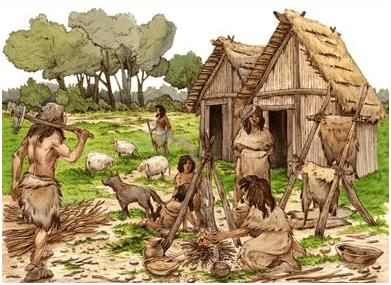 Mesolithic age group people
Mesolithic age group people
Characteristic Features of the Mesolithic Era
- It intervened as a transitional phase between the Palaeolithic Age and the Neolithic or New Stone Age.
- The Mesolithic people lived on hunting, fishing, and food gathering: at a later stage they also domesticated animals. The first three occupations continued the paleolithic practice, while the last was interrelated with the neolithic culture.
- The characteristic tools of the Mesolithic Age are microliths. The miniature stone tools usually made of crypto-crystalline silica, chalcedony or chert, both of geometrical and non-geometrical shapes. They were not only used as tools but were also used to make composite tools, spearheads, arrowheads, and sickles after hafting them on wooden or bone handles. These microliths enabled the Mesolithic man to hunt smaller animals and birds.
- The Mesolithic men started to wear clothes made of animal skin. The Mesolithic men started to wear clothes made of animal skin.
- The first human colonization of the Ganga Plains happened during this period.
- The people of this era believed in life after death and hence they buried the dead with food items and other goods.
- The mesolithic sites are found in good numbers in Rajasthan, southern Uttar Pradesh, central and eastern India and also south of the river Krishna Of them Bagor in Rajasthan is very well excavated.
- It had a distinctive microlithic industry, and its inhabitants subsisted on hunting and pastoralism. The cultivation of plants around 7000-6000 B.C. is suggested in Rajasthan from a study of the deposits of the former Salt Lake, Sāmbhar.
- The people of the paleolithic and Mesolithic ages practiced painting. Prehistoric art appears in several places, but Bhimbetka in Madhya Pradesh is a striking sight. Situated in the Vindhya range, 45 km south of Bhopal, it has more than 500 painted rock shelters, distributed in an area of 10 sq km.
- Perching birds, which live upon grain, are absent in the earliest group of paintings, which evidently belong to the hunting/gathering economy.
Important Mesolithic Sites
- Bagor in Rajasthan is one of the biggest and best-documented Mesolithic sites in India. Bagor is on river Kothari where microliths along with animal bones and shells have been excavated.
- Adamgarh in Madhya Pradesh provides the earliest evidence for the domestication of animals.
- There are about 150 Mesolithic rock art sites across India, with a rich concentration in Central India such as Bhimbetka caves (Madhya Pradesh), Kharwar, Jaora and Kathotia (M.P), Sundargarh and Sambalpur (Odisha), Ezhuthu Guha (Kerala).
- Microliths have also been found in some valleys of river Tapi, Sabarmati, Narmada, and Mahi.
- Langhnaj in Gujarat and Biharanpur in West Bengal are also important Mesolithic sites. Bones of wild animals (rhinoceros, blackbuck, etc.) have been excavated from Langhnaj. Several human skeletons and a large number of microliths have been recovered from these places.
- Though pottery is absent at most Mesolithic sites, it has been found in Langhnaj (Gujarat) and in the Kaimur region of Mirzapur (U.P).
1. The use of larger stones as tools was the characteristic feature
2. Smaller animals were hunted in general
Select from the following codes
- 1 only
- 2 only
- Both 1 and 2
- Neither 1 nor 2
- In the world context the New Stone Age began in 9000 B.C.
- The term Neolithic is derived from the Greek word ‘neo’ which means new and ‘lithic’ meaning stone. Thus, the term Neolithic Age refers to the ‘New Stone Age’.
- It is also termed as ‘Neolithic revolution’ since it introduced a lot of important changes in man’s social and economic life. The Neolithic age saw man turning into a food producer from food gatherer.
- The neolithic phase in south India seems to have covered the period from about 2000 B.C. to 1000 B.C. The Neolithic settlers were the earliest farming communities. They broke the ground with stone hoes and digging sticks at the end of which ring stones weighing one to half a kilogram were fixed. They produced ragi and horse gram (kulathi). The neolithic people of Mehrgarh were more advanced. They produced wheat, cotton, and lived in mud-brick houses.
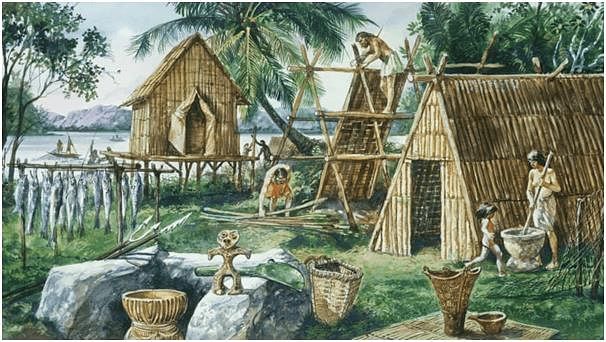
Characteristic Features of the Neolithic Age
- Tools and Weapons: The people used microlithic blades in addition to tools made of polished stones. The use of celts was especially important for ground and polished hand axes. They also used tools and weapons made of bones – such as needles, scrapers, borers, arrowheads, etc. The use of new polished tools made it easier for humans to cultivate, hunt and perform other activities in a better manner.
- Agriculture: The people of the Neolithic age cultivated land and grew fruits and corn like ragi and horse gram (kulati). They also domesticated cattle, sheep and goats.
- Pottery: With the advent of agriculture, people were required to store their food grains as well as to cook, eat the product, etc. That’s why it is said that pottery appeared in this phase on a large scale. The pottery of this period was classified under greyware, black-burnished ware, and mat impressed ware. In the initial stages of the Neolithic age, handmade pottery was made but later on, foot wheels were used to make pots.
- Housing and Settled Life: The people of Neolithic age lived in rectangular or circular houses which were made of mud and reeds. Neolithic men also knew how to make boats and could spin cotton, wool and weave cloth. The people of the Neolithic age led a more settled life and paved the way for the beginning of civilization.
- The neolithic people did not live far away from the hilly areas. They inhabited mainly the hilly river valleys, rock shelters and the slopes of the hills, since they were entirely dependent on weapons and tools made of stone.
- The period between 9000 B.C. and 3000 B.C. saw remarkable progress of technology in western Asia because the people developed the arts of cultivation, weaving, pot making, house building, domestication of animals, etc. But the Neolithic Age in the Indian subcontinent began around the sixth millennium B.C.
Based on the types of axes used by Neolithic settlers, we notice three important areas of Neolithic settlements:
(a) The north-western group of neolithic tools represents rectangular axes with curved cutting edge.
(b) The north-eastern group shows polished stone axes with rectangular butt and has occasional shouldered hoes.
(c) The southern group is distinguished by axes with oval sides and pointed butt.
Important Neolithic Sites
- Koldihwa and Mahagara (lying south of Allahabad) – This site provides evidence of circular huts along with crude hand made pottery. There is also evidence of rice, which is the oldest evidence of rice, not only in India but anywhere in the world.
- Mehrgarh (Balochistan, Pakistan) – The earliest Neolithic site, where people lived in houses built of sun-dried bricks and cultivated crops like cotton and wheat.
- Burzahom (Kashmir) – It means ‘the place of birth’ and is situated 16 km northwest of Srinagar. The domestic dogs were buried along with their masters in their graves; people lived in pits and used tools made of polished stones as well as bones.
- Gufkral (Kashmir) – This neolithic site is famous for pit dwelling, stone tools and graveyards in houses.
- Chirand (Bihar) – The neolithic men used tools and weapons made of bones.
- Piklihal, Brahmagiri, Maski, Takkalakota, Hallur (Karnataka) – The people were cattle herders. They domesticated sheep and goats. Ash mounds have been found.
- Belan Valley (which is located on the northern spurs of the Vindhyas and middle part of Narmada valley) – All three phases i.e., paleolithic, mesolithic, and neolithic ages are found in the sequence.
- Neolithic tools are also found in the Garo hills in Meghalaya on the northeastern frontiers of India.
- Neolithic celts, axes, adzes, chisels, etc., have also been found in the Orissa and Chotanagpur hill areas.
The metal age marks the end of the stone age. Metal age is broadly categorized into two ages and they are as follows
Bronze itself is harder and more durable than other metals available at the time, allowing bronze age civilizations to gain a technological advantage. This age was the first witness in Egypt. Most commonly metals in this period were copper and bronze.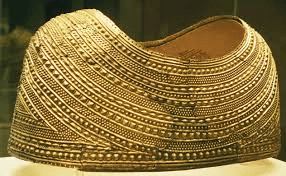
In the 19th century, the use of iron increased and hence rise of Iron Age. This age is the last age of the ” 3 Age System”. This age brought an end to the bronze age. Weapons were also made of iron in this era.